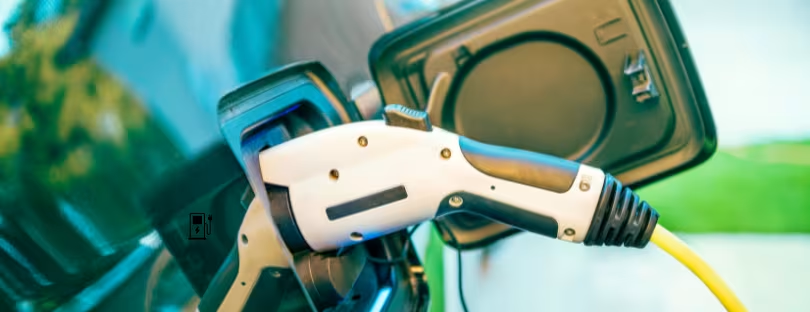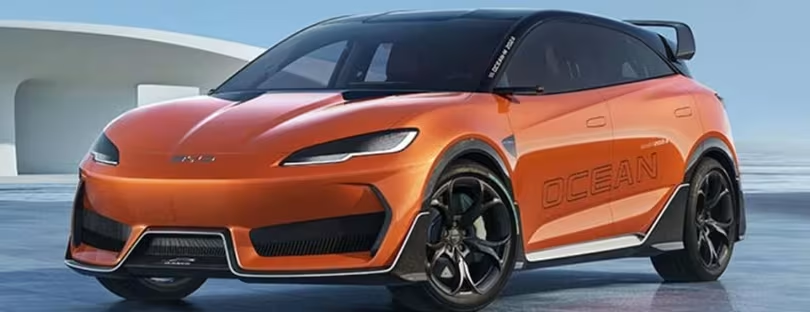
The Electric Vehicle Charging Station Revolution
Let’s talk about electric vehicles (EVs) for a second. They’re no longer just a futuristic concept or a niche hobby for eco-conscious tech enthusiasts. EVs are here, they’re growing, and they’re changing the way we think about transportation. But here’s the thing: an electric vehicle is only as good as its charging infrastructure. Enter the unsung hero of the EV revolution—the electric vehicle charging station. These little (or sometimes not-so-little) power hubs are the backbone of the EV ecosystem, and they’re popping up everywhere.
Today, we’re diving into the world of EV charging stations, with a special focus on how Europe is leading the charge (pun absolutely intended).
What Even Is an EV Charging Station?
Okay, let’s start with the basics. An EV charging station is essentially a gas station for electric cars, but instead of pumping liquid fuel, you’re plugging in to recharge your battery. Sounds simple, right? Well, it is—and it isn’t. Charging stations come in all shapes, sizes, and speeds. You’ve got your Level 1 chargers (slow but steady, like a tortoise), Level 2 chargers (the Goldilocks “just right” option for most people), and DC fast chargers (the hare of the group, zapping your car back to life in minutes).
The beauty of these stations is that they’re not just limited to dedicated charging hubs. You can find them in parking lots, at shopping centers, outside restaurants, and even at some workplaces. It’s all about convenience. Imagine running errands, grabbing a coffee, and coming back to a car that’s juiced up and ready to go. That’s the dream, and it’s becoming a reality faster than you might think.
Why Charging Stations Matter
Let’s be real: range anxiety is a thing. It’s that nagging fear that your EV will run out of juice before you reach your destination. And honestly, it’s one of the biggest barriers to widespread EV adoption. But here’s the good news: the more charging stations there are, the less you have to worry. It’s like knowing there’s a gas station on every corner—except it’s cleaner, quieter, and often cheaper.
Charging stations also play a huge role in making EVs accessible to everyone. Not everyone has a garage or driveway where they can install a home charger. For city dwellers or apartment renters, public charging stations are a lifeline. They’re the bridge between the EV dream and everyday practicality.
Where Can You Find EV Charging Stations?
This is a big question for new EV owners. While gas stations are pretty much on every corner, EV charging stations require a bit more planning. The good news? The number of charging stations is growing fast. You can find them in:
- Shopping malls
- Hotels
- Highway rest stops
- Workplaces
- Residential buildings
And thanks to apps like PlugShare, ChargePoint, and Tesla’s built-in navigation, locating a charging station is easier than ever.
How Long Does It Take to Charge an EV?
The answer is: it depends. Factors like battery size, charger type, and even weather conditions can impact charging times. Here’s a rough breakdown:
- Level 1: 8-20 hours for a full charge
- Level 2: 4-8 hours for a full charge
- DC Fast Charging: 20-60 minutes for an 80% charge
For daily commuters, Level 2 home charging overnight is usually enough. But for road trips? You’ll want to map out fast-charging stations ahead of time.
Europe: The EV Charging Station Powerhouse
Now, let’s talk about Europe. If EV adoption were a race, Europe would be lapping the competition. The continent has embraced electric vehicles with open arms, and its charging infrastructure is a big reason why. Europe isn’t just building charging stations—it’s building an entire ecosystem to support the EV lifestyle.
The Numbers Don’t Lie
As of 2023, Europe is home to over 400,000 public charging points, and that number is growing every day. Countries like Norway, Germany, the Netherlands, and France are leading the pack, with extensive networks that make it easy to go electric. In fact, Norway is so far ahead that EVs now make up the majority of new car sales. That’s right—more than 50%! And a big part of that success is thanks to the country’s robust charging infrastructure.
The European Union’s Role
The European Union (EU) has been a driving force behind this charging station boom. Through initiatives like the Alternative Fuels Infrastructure Directive, the EU has set ambitious targets for member states to deploy charging points along major highways and in urban areas. The goal? To ensure that no driver is ever more than 30 miles away from a charging station. That’s a game-changer.
But it’s not just about quantity—it’s about quality too. Europe is investing in fast chargers that can deliver a full charge in under 30 minutes. Companies like Ionity (a joint venture between BMW, Ford, Hyundai, and others) are building high-power charging networks along major highways, making long-distance EV travel a breeze.
The Cultural Shift
What’s really interesting about Europe’s approach is the cultural shift that’s happening. Charging stations aren’t just seen as a necessity—they’re seen as an opportunity. Cities are integrating them into public spaces, turning them into amenities that attract EV drivers. Imagine pulling up to a charging station in the heart of Amsterdam, plugging in, and then hopping on a bike to explore the city while your car charges. It’s a whole new way of thinking about transportation.
And let’s not forget the environmental angle. Europe has long been a leader in sustainability, and the push for EVs and charging stations is a natural extension of that. By reducing reliance on fossil fuels, these stations are helping to cut emissions and fight climate change. It’s a win-win for drivers and the planet.
How Much Does It Cost to Charge an EV?
Another big question! The cost varies depending on where you charge, electricity rates in your area, and the type of charger you use.
- Home Charging: On average, charging an EV at home costs between $5-$15 for a full charge, depending on your electricity rates and battery size.
- Public Charging: Prices vary, but Level 2 public chargers typically cost around $0.20-$0.40 per kWh. DC fast chargers are pricier, usually $0.40-$0.70 per kWh.
- Free Charging: Some businesses, hotels, and even workplaces offer free charging to customers and employees as a perk.
Still, even with these costs, EV charging is significantly cheaper than gasoline in the long run.
Challenges and Opportunities
Of course, it’s not all smooth sailing. Building a massive network of charging stations comes with its fair share of challenges. For starters, there’s the issue of standardization. Different cars use different plugs, and not all charging stations are compatible with every vehicle. It’s like trying to use an iPhone charger on an Android phone—frustrating, to say the least. Thankfully, efforts are underway to create more universal standards, but it’s still a work in progress.
Then there’s the question of energy demand. As more people switch to EVs, the strain on the electrical grid will increase. That’s why many charging stations are incorporating renewable energy sources like solar and wind. Some are even experimenting with battery storage to balance the load. It’s a complex puzzle, but one that’s being solved piece by piece.
What’s Next for EV Charging Stations?
The future of EV charging stations is bright—and it’s happening fast. We’re talking about wireless charging pads that power up your car while you park, ultra-fast chargers that can deliver 200 miles of range in 10 minutes, and smart grids that optimize charging times based on energy demand. It’s like something out of a sci-fi movie, but it’s real.
And let’s not forget about accessibility. As the technology becomes more affordable, we’ll see charging stations in more rural and underserved areas, making EVs a viable option for everyone. It’s all about leveling the playing field and creating a more inclusive EV ecosystem.
Final Thoughts
Electric vehicle charging stations are more than just a piece of infrastructure—they’re a symbol of progress. They represent a shift toward cleaner, smarter, and more sustainable transportation. And Europe is showing the world how it’s done. With its ambitious targets, innovative solutions, and cultural embrace of EVs, the continent is paving the way for a greener future.
So, the next time you see a charging station, take a moment to appreciate it. It’s not just a place to plug in—it’s a glimpse into the future. And who knows? Maybe your next car will be electric, and that charging station will become your new best friend. Here’s to the road ahead—charged up and ready to go.












